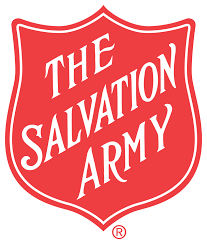
June 1 marks the end of emergency enhanced SNAP benefits for Hoosiers statewide. In anticipation of increased demand, The Salvation Army Indiana Division is working to ensure that feeding programs and food pantries run by the organization across the state can continue to meet the needs of their communities.
Indiana’s COVID-19 public health emergency ended on March 3, 2022, making May 31 the final day that SNAP recipients would receive the maximum benefit allowed in accordance to the number of people in their household. Starting on June 1, benefits will be based on a formula that includes several eligibility factors, including household income. A permanent adjustment to the program made in October 2021 means that most households will receive higher benefits than they did pre-pandemic, but they will still experience a drop from May to June.
The USDA has provided examples of how these changes will affect households of difference sizes and circumstances. These can be seen by visiting the online “SNAP Benefits – COVID-19 Pandemic and Beyond” page of the USDA website.
The Salvation Army has already seen an increase in visits to its food pantries and hot food programs over the past several months as inflation has made it harder for Hoosiers to put food on the table. According to the USDA, between April 2021 and April 2022 grocery store prices have risen by 10.8 percent. Fresh produce, milk, eggs, and meat prices are continuing to skyrocket with farm-level egg prices predicted to increase us to 76.5 percent in 2022. These higher prices mean that struggling households are bringing home less food each time they go to the store, pushing them to find supplemental food at organizations like The Salvation Army.
“The cost of food, housing, medical, and transportation has not been put into consideration regarding the ending of the pandemic emergency funds,” said Dena Simpson, Divisional Director of Social Services for The Salvation Army Indiana Division. “Individuals and families are in recovery mode and facing a number of challenges.”
These challenges include:
Drained savings and strained finances Loss and/or change in housing and utility needs Increased instances of domestic violence Ongoing COVID-related medical needs Loss of primary income provider for the family Larger households with combined and extended families Changes in childcare and educational needs and routinesWith inflation outpacing wage increases, the results have been devastating. The Salvation Army is working with partner organizations, food banks, donors, and community volunteers to meet the increased demand. Food costs continue to rise for The Salvation Army, as well, as provider food banks like Feeding America anticipate spending 40 percent more to purchase bulk food in 2022 compared to 2021.






